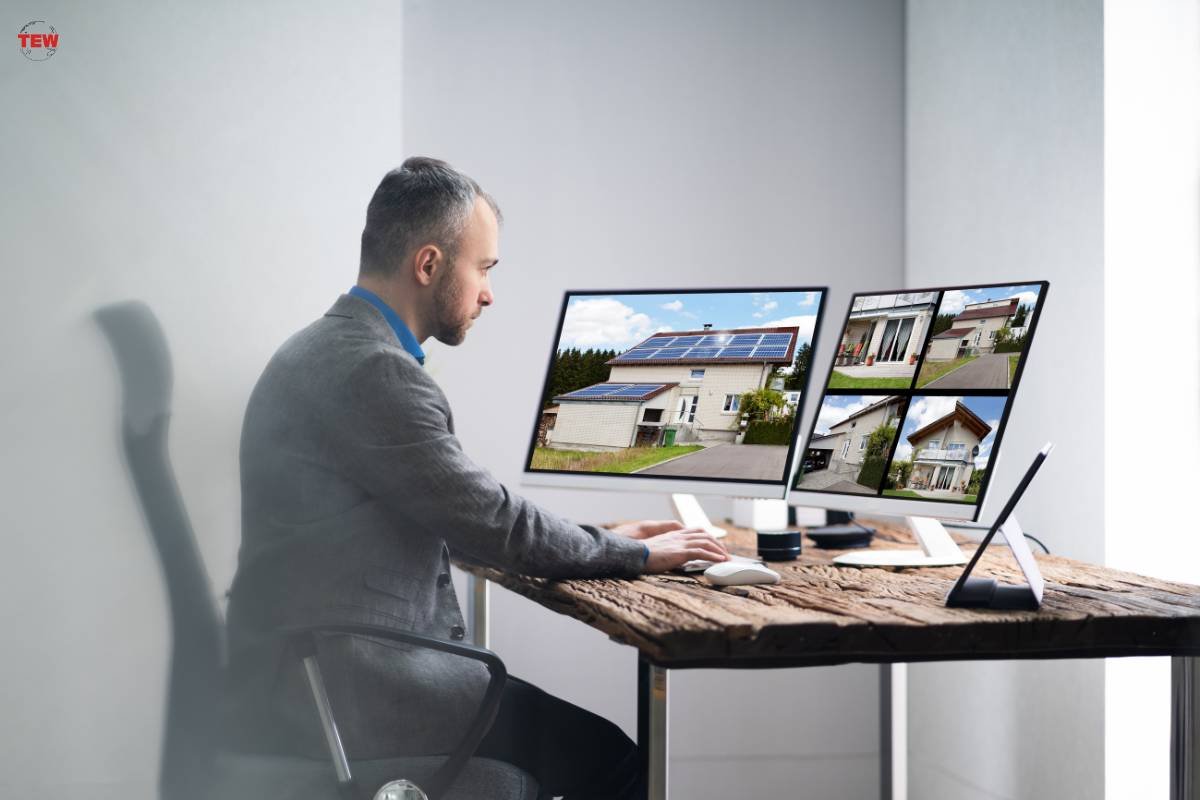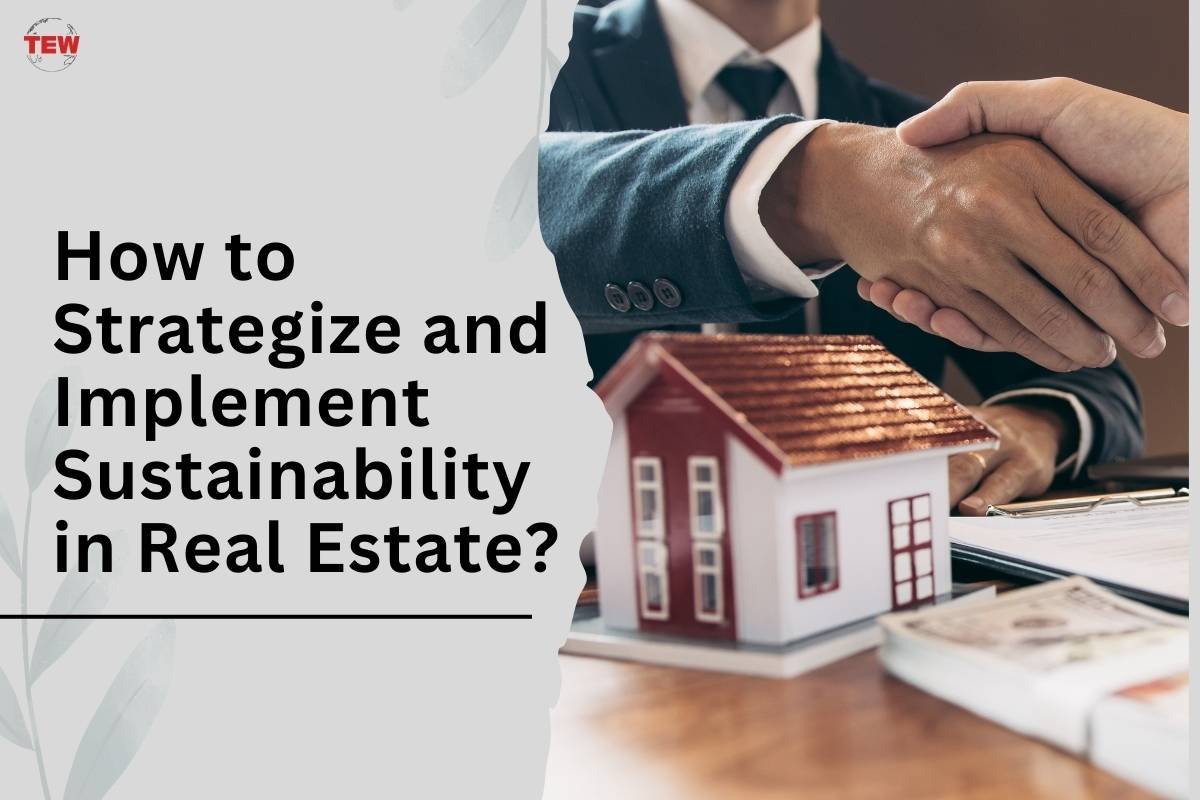In the dynamic world of real estate, it’s crucial to understand the role of sustainability in real estate. It is an essential approach that balances environmental responsibility, social equity, and economic viability.
Why does this matter to you? Because, as a real estate professional, you have the power to make a significant impact. Your decisions influence not only the profitability of your projects but also the well-being of communities and the health of our planet. The buildings you develop, manage, or sell have a lasting footprint. Moreover, it’s more important than ever to ensure that this footprint is green.
This guide is designed to be your companion in mastering the art of sustainable real estate. Whether you’re looking to upgrade an existing property, develop a new green building, or simply integrate eco-friendly practices into your business model, this guide has got you covered. You’ll discover the ‘whats’ and ‘whys’ and ‘hows’ of sustainable real estate.
So, without further ado, let’s learn how you can make your next project sustainable without a hassle.
Fundamentals of sustainability in real estate
Sustainability in real estate goes far beyond just adding a few green plants or installing solar panels. It’s about creating spaces that nurture life, communities, and the environment while also being economically viable. Let’s break down what this really means for you.

i) The Three Pillars of Sustainability
Environmental Responsibility: This is about reducing the ecological footprint of your properties. Think energy-efficient designs, sustainable construction materials, and water conservation practices. It’s not just about the building itself but also how it interacts with its surroundings.
Social Equity: Your projects should contribute positively to the communities they serve. This includes ensuring accessibility, promoting health and well-being, and creating spaces that foster community interaction and inclusivity.
Economic Viability: Sustainable properties must be economically sound. This doesn’t just mean profit for developers and investors; it also involves considering the long-term value for owners, tenants, and even the broader community.
ii) The Impact of sustainability in real estate
You might be surprised to know that buildings account for a significant portion of global energy use and carbon emissions. Your role in real estate places you at the forefront of the battle against climate change. By adopting sustainable practices, you’re contributing to a healthier planet.
Assessing sustainability in real estate Potential in Properties
Before diving into sustainable transformations, it’s essential to assess the current state of your properties.
i) Methods for Evaluating the Sustainability of Existing Properties
Start with an energy audit. This will help you identify areas where energy is being wasted and where improvements can be made. Next, you need to assess water usage and conservation potential. This will help you look into low-flow fixtures, rainwater harvesting systems, and efficient landscaping.
Furthermore, evaluating the indoor environmental quality, including air circulation, natural light, and the use of non-toxic materials, can help you plan better.
ii) Identifying Key Areas for Sustainable Improvement
Focus on areas that have the most significant impact. These often include heating and cooling systems, insulation, and lighting. Also, consider the potential for renewable energy sources like solar or wind power.
Don’t overlook the small changes. Sometimes, simple fixes like motion-sensor lights or programmable thermostats can make a big difference.
iii) Tools and Technologies for sustainability in real estate Assessment
Utilize software and tools designed for sustainability assessment. These can provide comprehensive insights into energy performance, water usage, and more, including resources like the National Wetlands Inventory Map for assessing waterways and wetlands on your project site.
Engage with sustainability consultants. Their expertise can offer tailored solutions and innovative ideas specific to your properties.
Stay informed about emerging technologies. The field of sustainability is ever-evolving, and being up-to-date can give you a competitive edge.
Sustainable Real Estate Development

Now that you’ve assessed your properties, it’s time to dive into the exciting world of sustainable development. You need to understand how to approach new projects with a sustainability-first mindset.
i) Principles of Sustainable Construction and Development
Use green buildings by prioritizing energy efficiency and resource conservation. Choose sustainable materials like recycled and locally sourced resources.
Integrate natural elements such as maximizing natural light, green roofs, and indoor nature incorporation. This holistic approach enhances aesthetics and contributes to environmental responsibility and healthier living spaces.
ii) Green Building Certifications
Understand the value of certifications like LEED and BREEAM. These certifications not only offer a framework for sustainability in real estate but also add credibility and value to your projects.
Explore the requirements for obtaining these certifications. They typically involve meeting certain standards in energy efficiency, water usage, materials, and indoor environmental quality.
Consider the long-term benefits of certification. Certified buildings often attract more tenants, command higher rents, and have lower operational costs.
Energy Efficiency and Green Building Technologies
Using energy efficiency and green technologies is a crucial step in this sustainability in real estate journey. Keep your focus on how you can effectively incorporate these elements into your real estate projects.
i) Strategies for Improving Energy Efficiency in Properties
Make sure to conduct energy audits regularly to identify areas for improvement. Also, you can upgrade to energy-efficient appliances and systems, like LED lighting, high-efficiency HVAC systems, and smart thermostats. In fact, enhanced insulation and window efficiency can help you maintain temperature and reduce energy consumption.
ii) Financing and Incentives for Energy-Efficient Upgrades
Learn about government grants, tax incentives, and rebate programs that support energy efficiency upgrades. Understanding the financial models can help you ease the process.
Invest in areas like green mortgages or energy-saving performance contracts. Also, building relationships with financial institutions that specialize in or are committed to green financing can benefit you in the long run.
Sustainable Urban Planning and Community Development

As a real estate professional, you have a unique opportunity to contribute to sustainable urban planning and community development. This chapter will guide you in understanding and leveraging your role in shaping more sustainable communities through real estate projects.
i) The Role of Real Estate in Sustainable Urban Planning
Recognize the impact of your projects on the larger urban environment. Your real estate development should contribute to reducing urban sprawl, promoting public transport, and creating walkable communities.
You must collaborate with urban planners and local governments to ensure that your projects align with broader sustainability in real estate goals and urban development plans. So that the project can positively affect the urban landscape and local ecosystems.
ii) Creating Sustainable Communities through Real Estate Projects
Develop properties that foster a sense of community, such as shared spaces encouraging social interaction and community engagement. Also, it is advisable to implement green spaces in your developments, like parks, gardens, and green roofs, which contribute to biodiversity and provide residents with a connection to nature.
Design buildings and communities that are inclusive and accessible to all, reflecting the diversity and needs of the broader population.
iii) Collaborating with Local Governments and Communities
Engage with local communities early in the development process. This can provide valuable insights into the needs and desires of the people who your projects will impact. It is required to be transparent and open in your communication with stakeholders. This helps build trust and ensures that your projects are well-received by the community.
Also, participate in public-private partnerships where possible. These collaborations can provide support and resources that benefit both your projects and the wider community.
Marketing and Selling Sustainable Real Estate
Effectively marketing and selling sustainable real estate is key to the success of your projects. Thus, learning how to communicate the value of sustainable properties to potential buyers and tenants helps you stand out in a competitive market.
i) Communicating the Value of sustainability in real estate to Buyers and Tenants
Highlight the long-term cost savings from energy-efficient features and reduced utility bills.
Emphasize the health and wellness benefits of living in environmentally friendly spaces, such as improved air quality and access to green spaces.
Showcase the unique features of your sustainable properties, like solar panels, green roofs, or smart home technologies, that differentiate them from conventional options.
ii) Marketing Strategies for Sustainable Properties
Use storytelling in your marketing materials to connect with buyers and tenants emotionally, illustrating how living in a sustainable property aligns with their values and lifestyle. You can also use social media and digital platforms to reach a broader audience, particularly environmentally conscious ones.
Partner with green organizations and participate in sustainability in real estate events to increase your visibility and credibility in the sustainable real estate market.
iii) The Impact of sustainability in real estate on Property Value and Appeal
Recognize that sustainable properties command a premium in the market, attributed to desirable features and lower operating costs. Stay informed about market trends, demonstrating the increasing demand for sustainable living spaces.
Utilize success stories and case studies to showcase the tangible benefits and value of investing in a sustainable property to potential buyers and tenants. By aligning with market preferences and providing concrete examples of success, you can effectively communicate the advantages of sustainable living.
Conclusion
The path to sustainable real estate offers a unique opportunity to make a lasting positive impact on the environment, communities, and the economy. Here’s a quick recap of key lessons from the guide.
The path to sustainability in real estate involves assessing your current practices, adopting innovative technologies, and managing your properties with an eco-friendly approach.
- Legal compliance, effective marketing, and staying ahead of trends are crucial to successful sustainable real estate.
- As a business manager in real estate, you hold a pivotal role in shaping a sustainable future. Your decisions and actions can lead the way for industry-wide change.
- Use the insights and strategies from this guide to integrate sustainability into every aspect of your business operations and projects.
- Remember, your commitment to sustainability can inspire others to follow suit, creating a ripple effect that extends far beyond your immediate sphere of influence.




